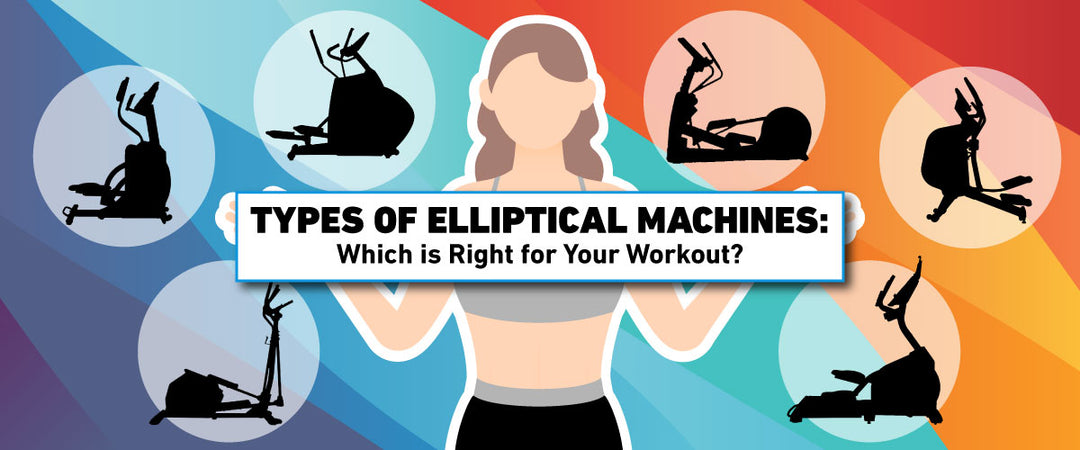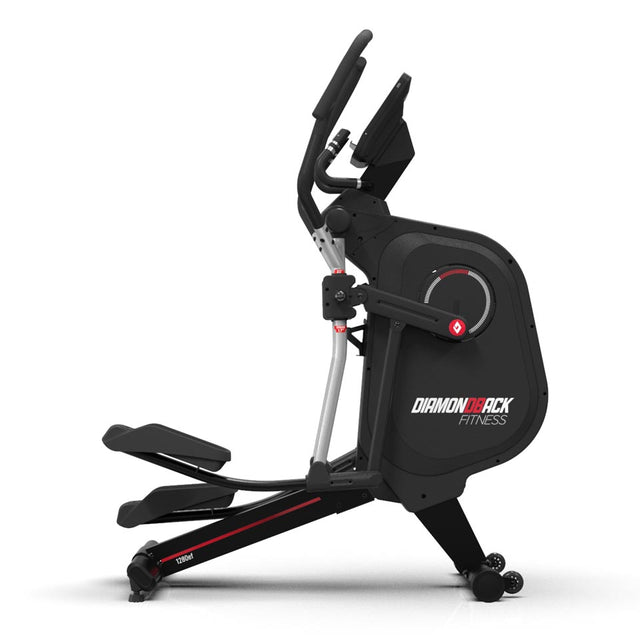Types of Elliptical Machines: Which is Right for Your Workout?
Posted onWhen in the market for an elliptical trainer, you may feel a bit overwhelmed by all of the options that are available to you. To help you with beginning to narrow down your choices, it is helpful to have a better understanding of the basic types of elliptical trainers that are available. This way, as you begin your search in earnest, you can keep your focus on the type of machine that you wish to purchase.
Standard Elliptical Trainer
The standard elliptical trainer was the type of trainer that the majority of people were the most familiar with when they first came out. The standard elliptical trainer has foot pedals that you stand on while holding onto a handlebar in the front. This handlebar does not move, which means you only work out the bottom part of your body, such as your quads, glues and hamstrings while moving the pedals in a circular motion. This type of trainer is rarely encountered today, with most people’s idea of the elliptical being the elliptical cross-trainer.
Elliptical Cross-Trainer
The elliptical cross-trainer provides a full-body workout by incorporating handles that move and all you to work your arms along with your lower body. By pulling and pushing the handlebars, you are also able to work your elbows, back, chest and shoulders. In essence, the elliptical cross-trainer is like combining a treadmill with a Stair stepper in one machine.
Lateral Elliptical Trainer
The lateral elliptical trainer is similar to the cross-trainer in that it is designed to give a more versatile workout. Under the “normal” setting, this elliptical will move forward-and-backward just as with the typical elliptical. With a few adjustments, however, it can be made to create more lateral movements so you are taking steps from side to side. This helps you to work out your outer glutes, hip and quads.
Elliptical Glider
An elliptical glider is different from the first two types of ellipticals in that it does not have a built-in motor or flywheel. Instead, it uses your bodyweight to create the resistance needed for your workout. As a result, your arms and legs are entirely responsible for supporting your bodyweight, which means you have to work the handles and stride with your legs in order to move the machine. Elliptical gliders tend to be more compact and lighter in weight than the standard elliptical or the cross-trainer, making them a good choice when portability matters or when available space is limited. On the other hand, this type of elliptical doesn’t offer various levels of resistance or an adjustable incline to help you change up your workout routine.
Recumbent Elliptical
Similar to a recumbent bicycle, a recumbent elliptical allows you sit while you complete your workout. A recumbent elliptical is different from a recumbent bicycle, however, in that the pedaling motion is longer with the elliptical and places less impact on the joints. Recumbent ellipticals also feature handles on either side of the machine, which allows you to move forward and back as with a cross-trainer. Since most of your weight is supported by the seat rather than by your legs, this is a good option for individuals with mobility issues.
Center Drive Elliptical Trainer
In some ellipticals, the location of the flywheel is the defining characteristic. In a center drive elliptical, the magnetic flywheel is located on either side of the user rather than behind the user. Considered to be the most modern of designs currently available, the flywheel is connected by a single shaft that joins the motor together behind the pedals. This results in a more compact design while also encouraging more natural biomechanics. In other words, it is gentler on the ankle, hip and knee joints, allowing you to work out for longer periods of time with less joint fatigue.
The from 1280ef Adjustable Stride elliptical Diamondback Fitness features the magnetic resistance rather than a cumbersome flywheel in order to provide more precise control while reducing the weight of the machine. In fact, this innovative elliptical weights on 187 pounds with a footprint of just 4 feet by 3 feet. Yet, despite these diminutive dimensions, it can accommodate users with strides ranging from 5’3” to 6’5” and weighing up to 350 pounds.
Front Drive Elliptical Trainers
Also known as a “shuffle trainer,” a front drive elliptical trainer places the flywheel in front of the user. This provides a more vertical range in motion that is similar to using a stair climber. It also results in a little more bounce in each step, but it does make it easier for the machine to generate incline. In fact, it can be raised to the point that it does feel like you are using a stair climber. This design is not quite as compact as the center drive elliptical, but it is more compact than the next type of elliptical: the rear drive elliptical.
Rear Drive Elliptical Trainer
The rear drive elliptical trainer puts the flywheel in the back of the machine, resulting in a longer, more circular stride in the front of the machine. This is the oldest style of elliptical, with the design dating back to the ‘90s. While this design does create more bounce with every step, it does encourage a straighter position, which helps to reduce strain on the back.
Compact Elliptical Trainer
A compact elliptical trainer is one that is comprised of just pedals mounted on a small flywheel. This makes it possible to place the entire machine under your desk while working. While some models can be used while standing, they are typically designed to be used while sitting down.
Foldable Elliptical Machine
Foldable elliptical machines, which feature pedals, a flywheel and handles, are bigger than compact elliptical machines. These machines are designed to fold to a size where they can be easily stored out of the way when not in use.
There are certainly many different elliptical options available from which to choose, but by taking the time to learn more about your options, you will be sure to find the machine that is right for you!

